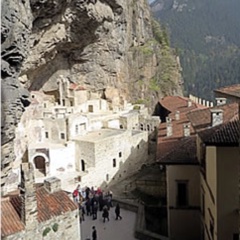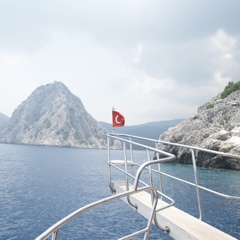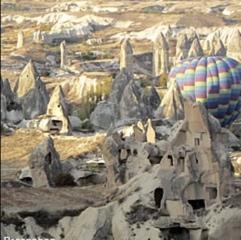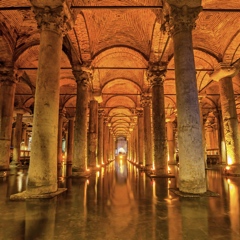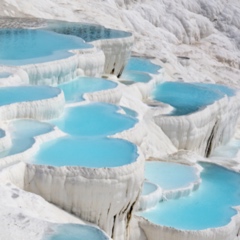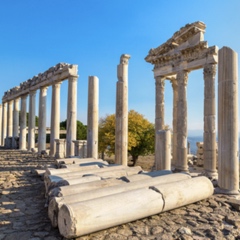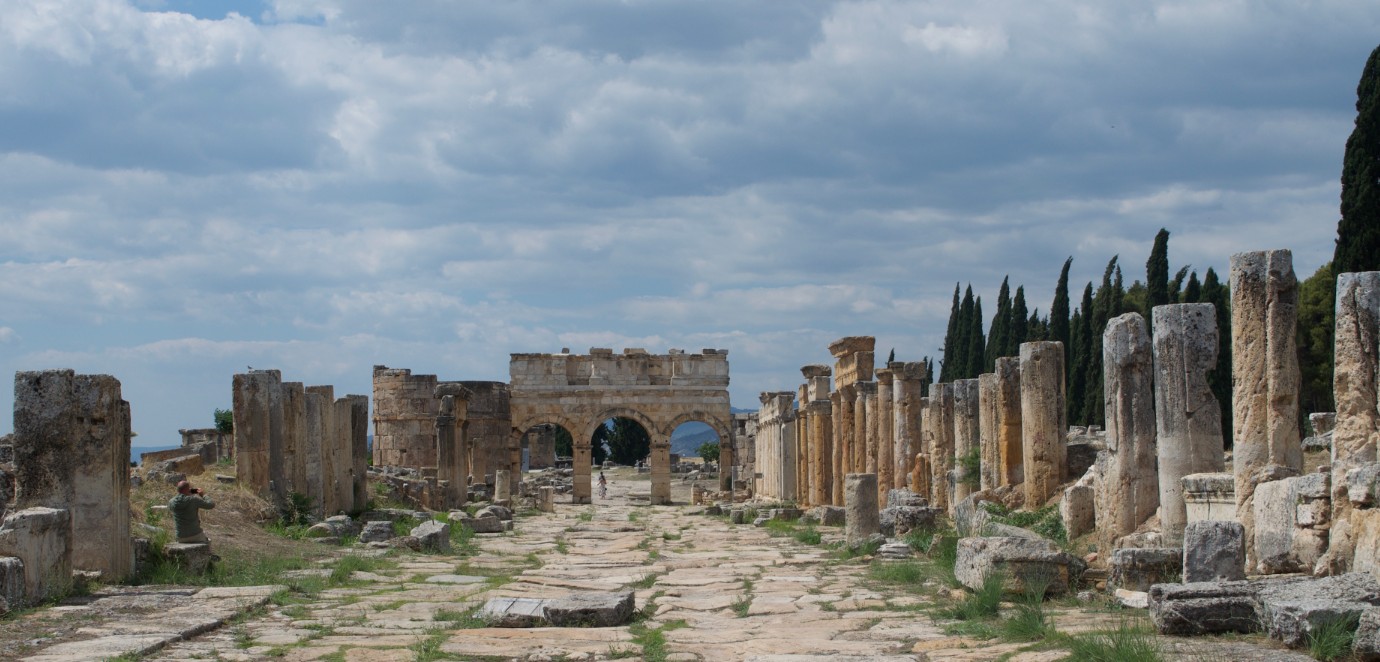
The Ancient City of Hieropolis
The ruins of the ancient city of Hierapolis offer a unique experience as part of the wider Pamukkale tourist attractions, but the ruins themselves are quite spectacular. The old city was likely founded in the 3rd century BC by the Seleucid Empire, but also features prominent Roman and Byzantine era structures. It is also known as the site where the Apostle Philip was supposedly martyred and buried. Notable archaeological structures include one of the largest surviving necropoleis in Turkey, two Roman baths, colonnaded streets, Byzantine gatehouses, a massive theater, a Gate to the Underworld, the Martyrium of Philip, as well as an Archeological Museum. Hierapolis is also a UNESCO World Heritage Site!
Hierapolis Archaeological Site Overview
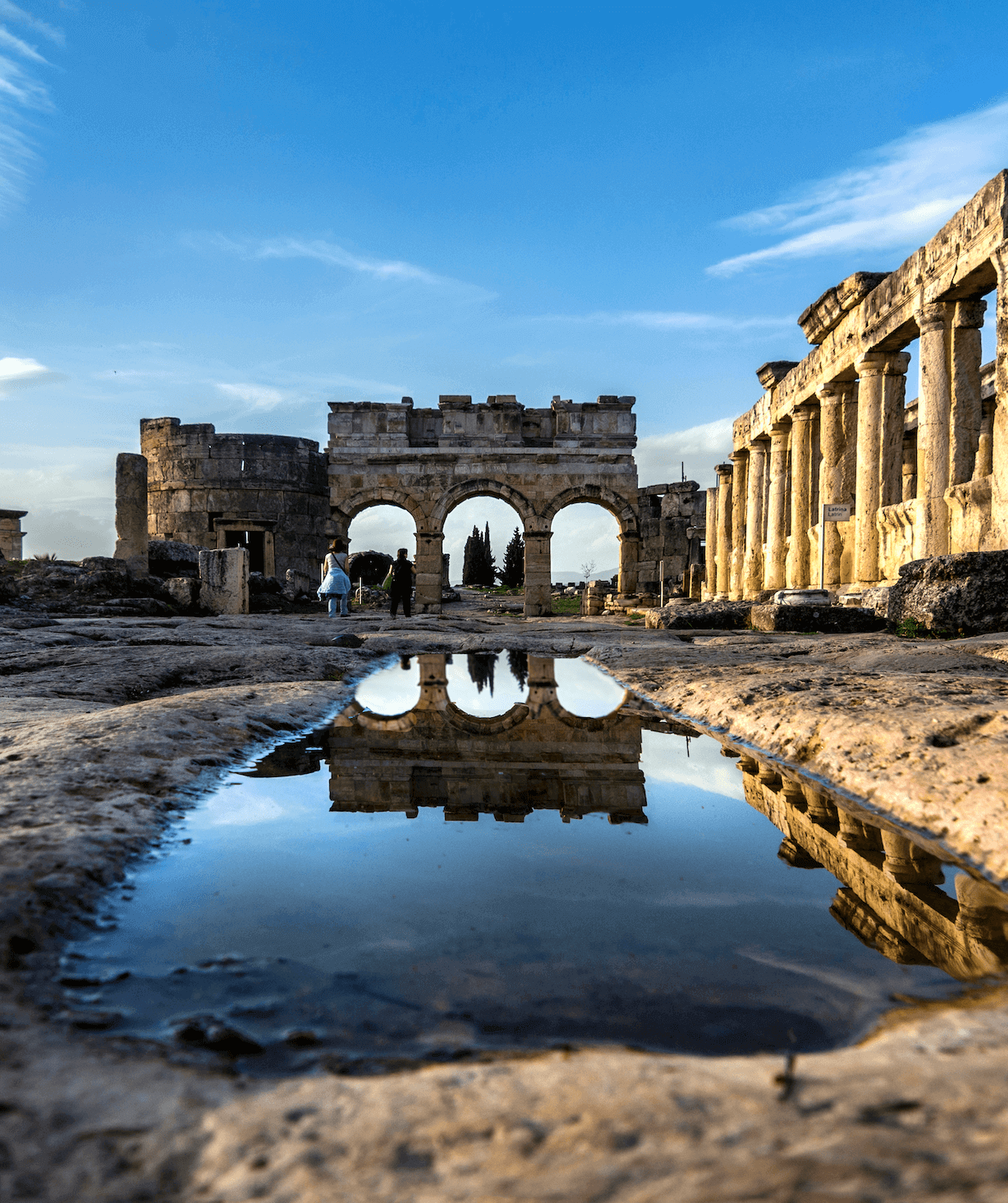
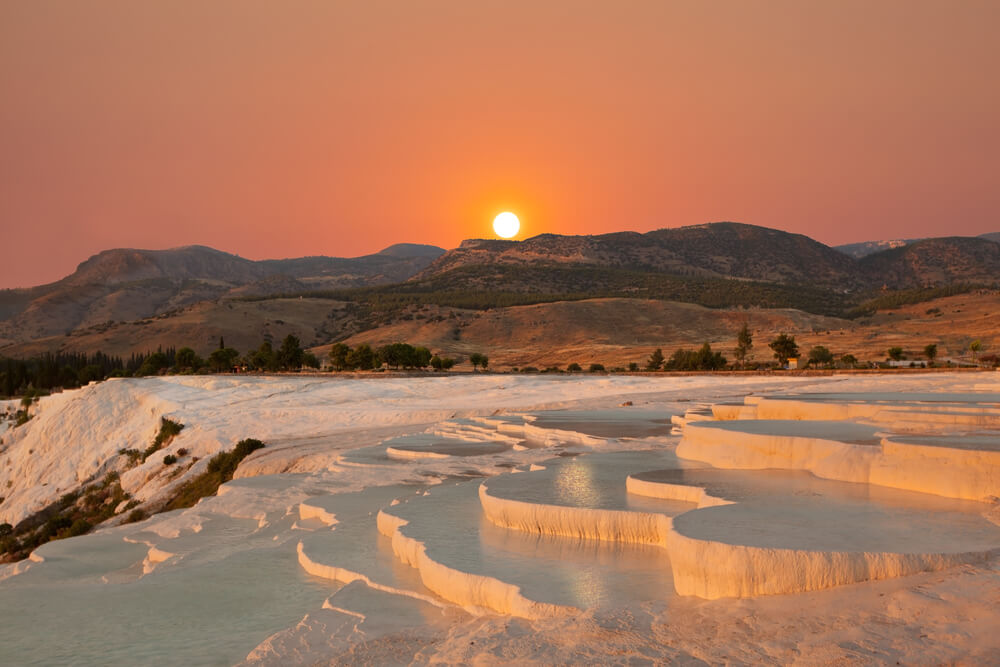
Contained within the entrance to the archaeology site is access to the travertines (the famous white-cliff pools of Pamukkale). There is also the Antique Pool, which allows you to swim over the remains of the Temple of Apollo. It is well worth packing your swimsuit to take a dip in both after a hot day of exploring the ancient ruins!
It is critical to note that there are three entrances to the ancient city! The Northern Entrance allows access at the very end of the archaeological park near the Northern Necropolis. This is not the main entrance and will require you to walk 20 minutes through the necropolis to get to the main section of ruins. It is 30-35 minutes to walk all the way to the travertines from this northern entrance. The entire site is over 3km/1.9 miles long from gate to gate. I would recommend entering through the South Gate and then seeing how much of the northern necropolis you want to explore once you get there. There is a walking entrance from the town, but this also features a long walk to the main site.
I recommend 3-4 hours to see the entire site, explore the northern necropolis, and visit the museum. The site is spread out, with St. Philip’s Martyrium requiring a hike to get out to it. However, it is possible to see the most prominent features in around 2 hours and leave off the northern necropolis and martyrium. If you visit in the summer months, bring plenty of water as it can get brutally hot with almost no shade, and facilities are only found at the north and south ends of the site.
For more guidance in exploring the site, see the overview below!


Visiting the Pamukkale, Hierapolis Archaeological Site
As most visitors enter from the South Gate, this will give you an overview of what you’ll encounter as you discover the site. After purchasing your ticket and clearing security, you will first enter the city through the South Byzantine Gate. During the late 4th century and early 5th century, the Byzantines reduced the city’s size and constructed more defenses. Once you enter, the remaining columns of the Roman city’s gymnasium built during the 1st century AD, will be to your left. It is essential to recognize the evolution of cities; hardly anything is left of the gymnasium due repurposing of materials for other later structures.
After passing by the gymnasium, you will walk through a garden to a little plaza with some stores, picnic tables, and the entrance to the travertines. Opposite this plaza and the white cliff pools are the large Central Roman Baths (one of two bath complexes in the city). The bath was built during the 2nd century AD and was partially restored after an earthquake in the 4th century. The building has been restored and converted into an Archeological Museum, which houses multiple statues and artifacts recovered from the site.
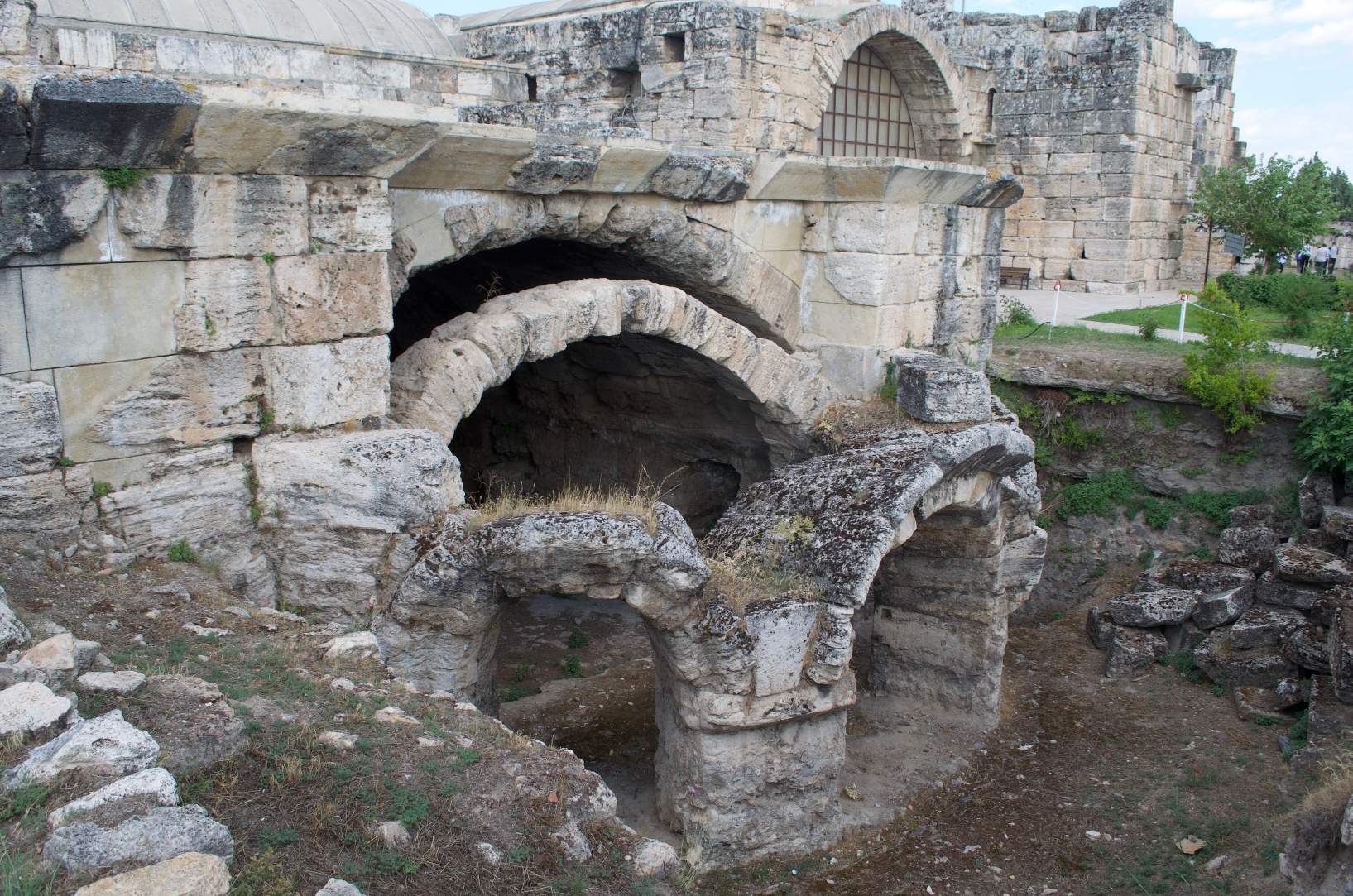
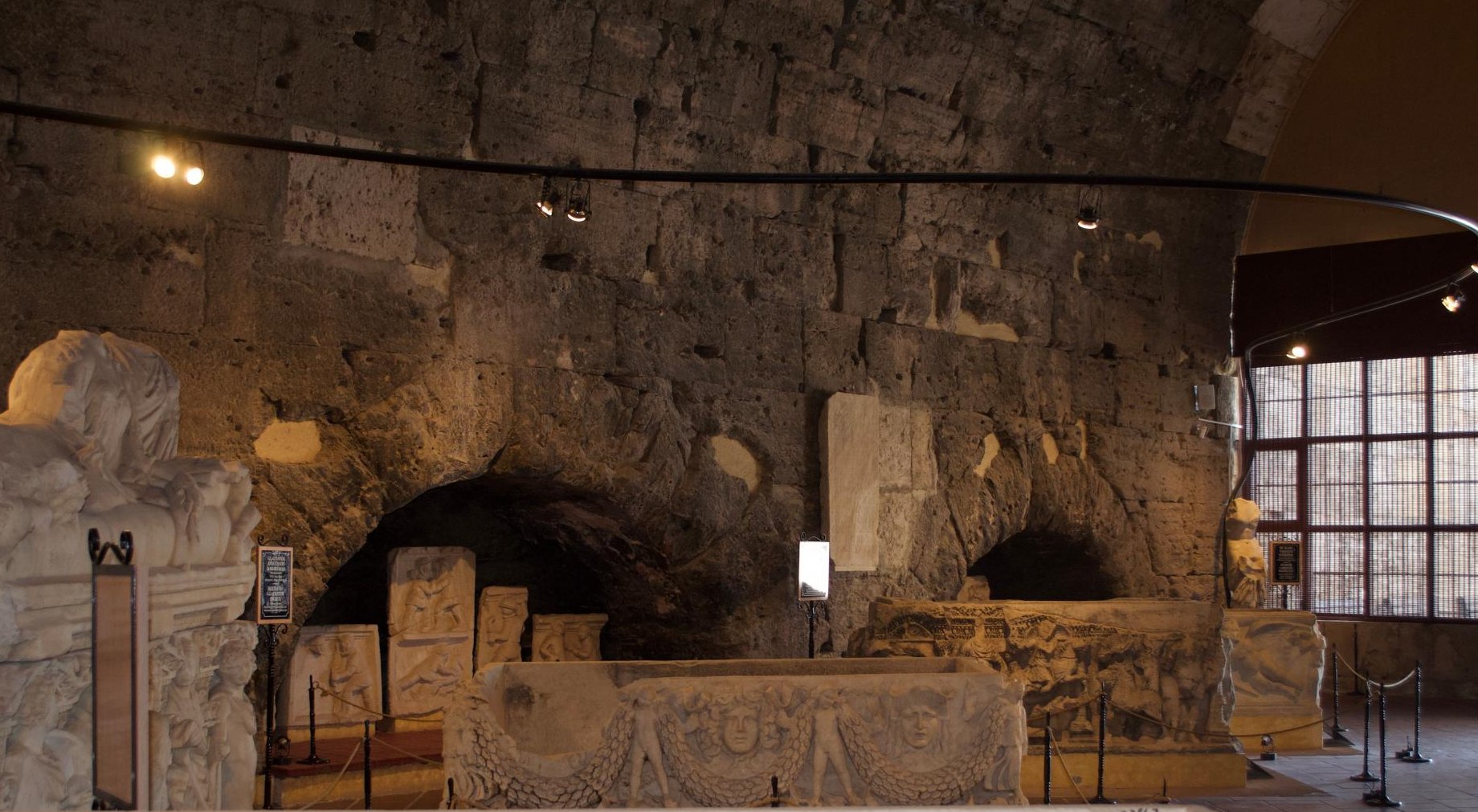
A road running past the baths to the east (away from the white pools) will take you to the entrance to the Antique Pool, where there are restaurants and food. The heart of the ancient city is just up the hill from this Antique Pool (following the path which continues up the left of the pool complex will take you to the Plutonium, Theater, and St. Philip Martyrium).
As you hike up the hill, you will see several prominent city features behind a chain-link fence. The first is the Temple Nymphaeum, which would have served as a primary water source for much of the city. Above this are the remnants of the Sanctuary to Apollo, who was one of the main gods of Hierapolis. Finally, as you continue up the hill, there will be an entrance on your right to the Plutonium.
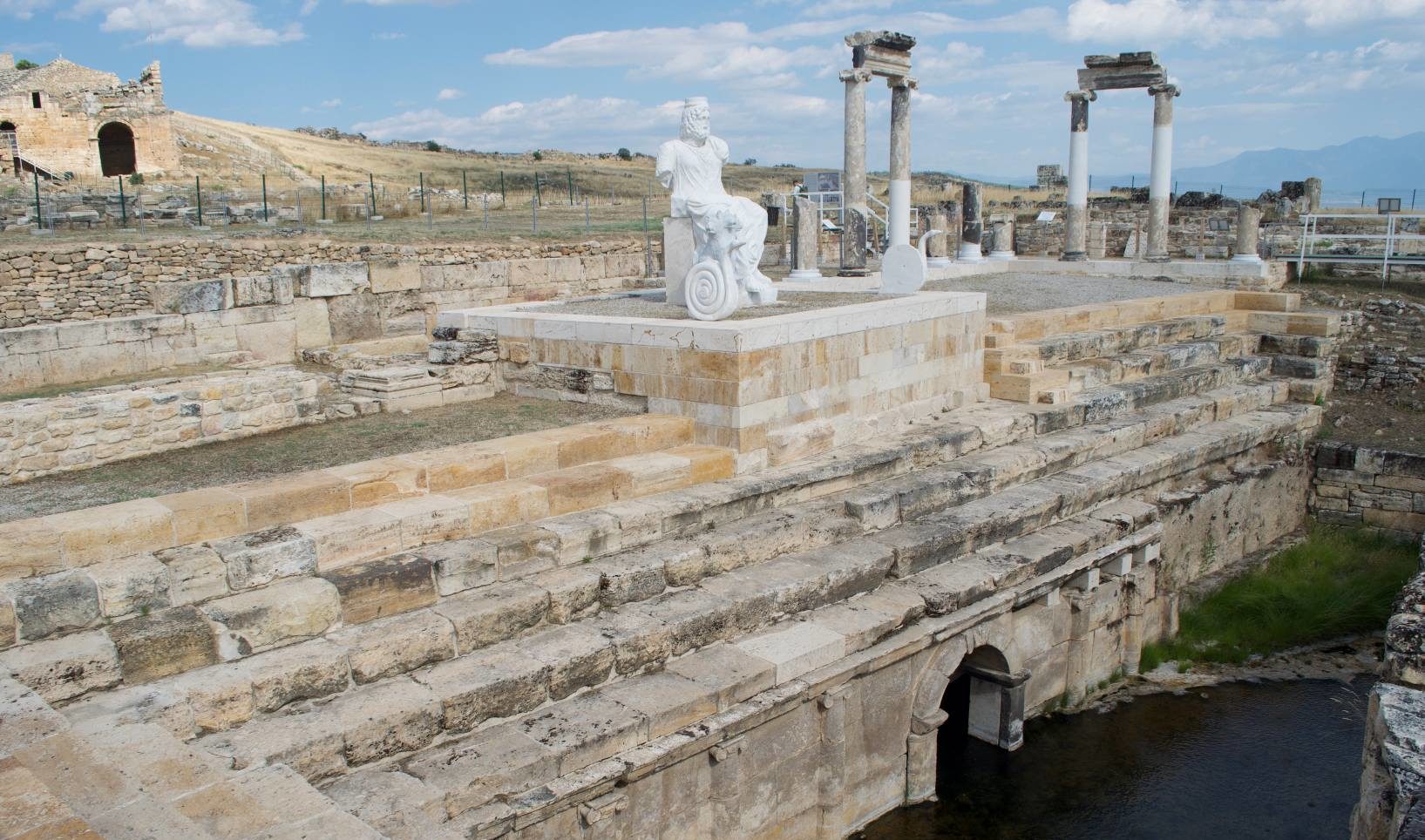
Plutonium (Gate to the Underworld)
The Plutonium is a temple to the god of the underworld, Pluto, and features the gate to the underworld. You will see the momentous replica statue of Pluto, which stood in this temple. Down in the temple courtyard, you can see the entrance to the cave of the “underworld,” where sacrifices would have taken place. This is not all myth, however, as Thais' rock fissure emits deadly carbon dioxide fumes. There are multiple firsthand accounts of animals being taken to the cave entrance and dropping dead from asphyxiation. Surrounding this sacrificial area is a standing room theater from which worshippers could watch the sacrifices. This sanctuary is one of the most famous in Asia Minor and would have been used from the 2nd century BC to the 3rd century AD. As Christianity began to rise, the Byzantines covered the view of this cave with a wall in the 5th century.
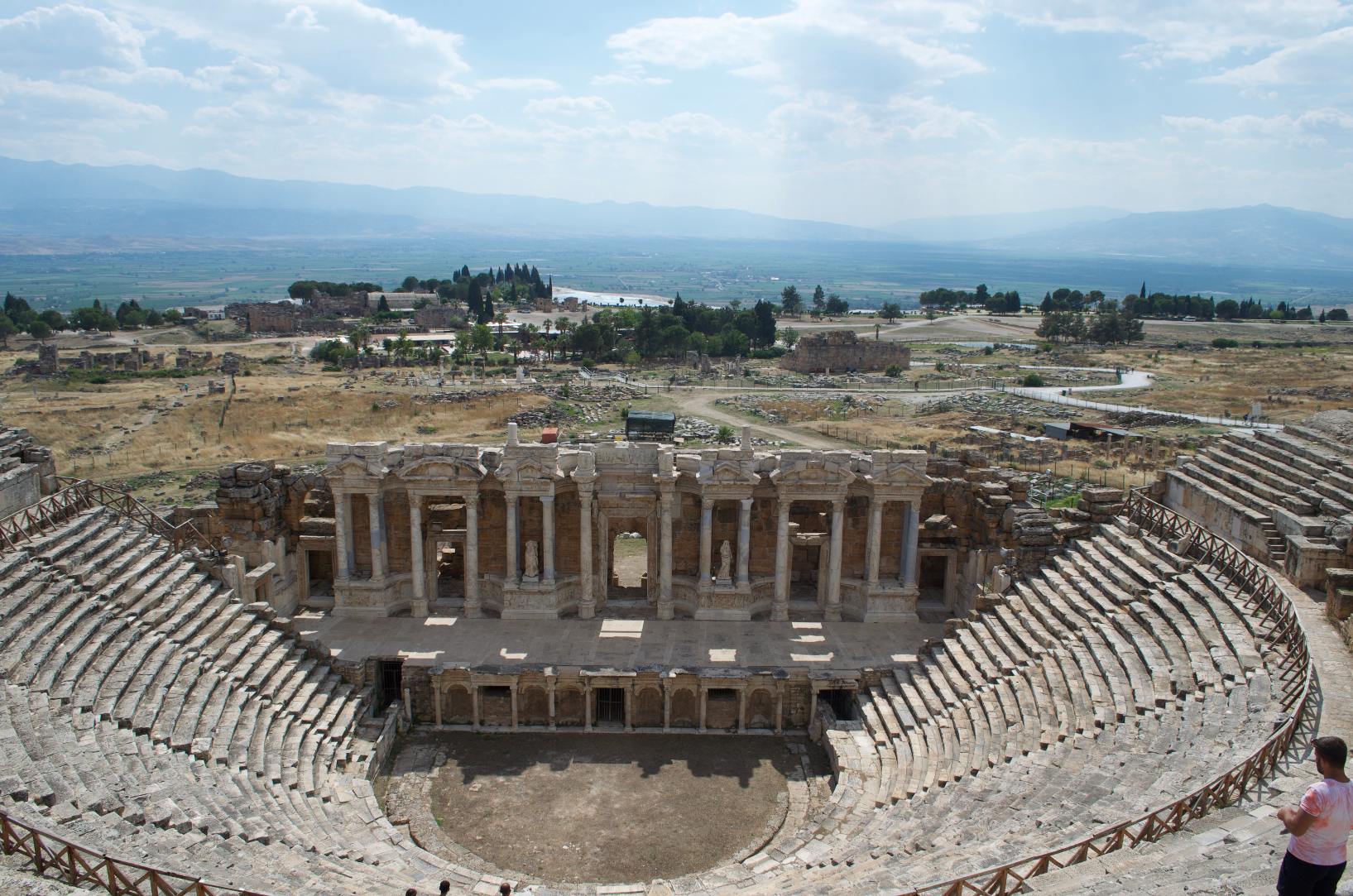
Theater
Hierapolis theater is one of Turkey's largest and best-preserved theaters, holding a capacity of 10,000 to 12,500 people. It featured a highly decorated stage, and you can see many of the carved marble statues and friezes in the museum at the bottom of the hill. It was likely first constructed between the 1st century BC and 1st century AD. It saw its renovation and monumental stage during the 3rd century AD. The theater has undergone extensive renovation by a team of Italian archaeologists. This theater is one of two that served the city's entertainment needs. The other suburban theater is located east of the basilica baths on the mountain's slopes. However, nothing remains but a few stairs as earthquakes severely damaged it.
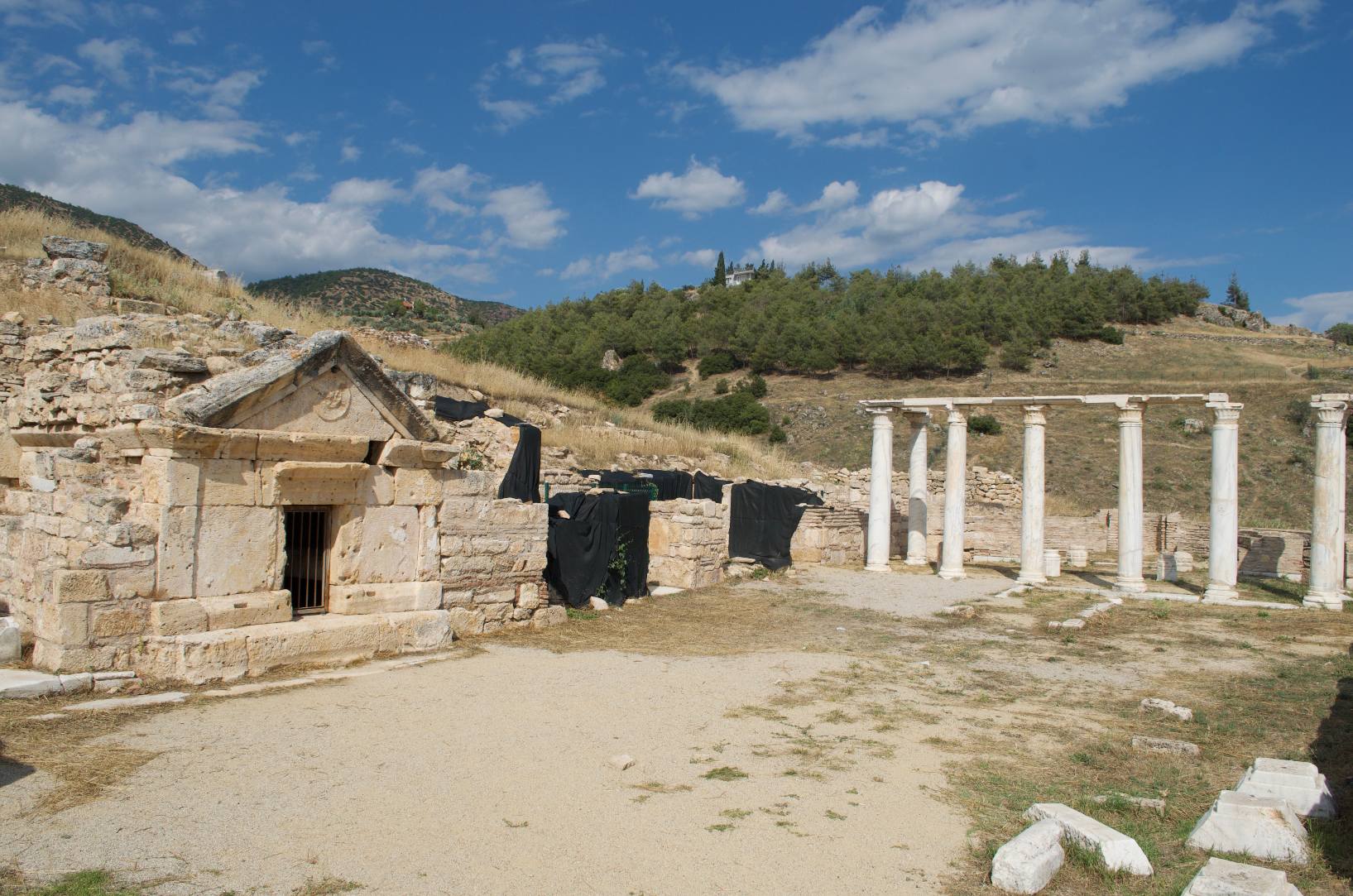
St. Philip’s Martyrium
Before you come to the entrance to the theater's top, there is also a path that peels off to the left (north) towards the St. Philip’s Martyrium complex. This is also accessible from the main colonnaded street. As you approach this hillock, you will pass through the St. Philip Gate, built during the 4th century by Emperor Theodosius. You will then pass over the small bridge (reconstructed as a replica in the modern period). As you enter the complex, to your left is a small octagonal bathhouse where pilgrims would have performed ritual cleaning. You will then come to a church built around a 1st century AD Roman tomb. According to tradition, this was likely the tomb of St. Philip. Continue up the stairs to the left of the church, and you will find yourself in the massive martyrium of St. Philip. This octagonal complex had 28 rooms that would have housed visiting pilgrims.
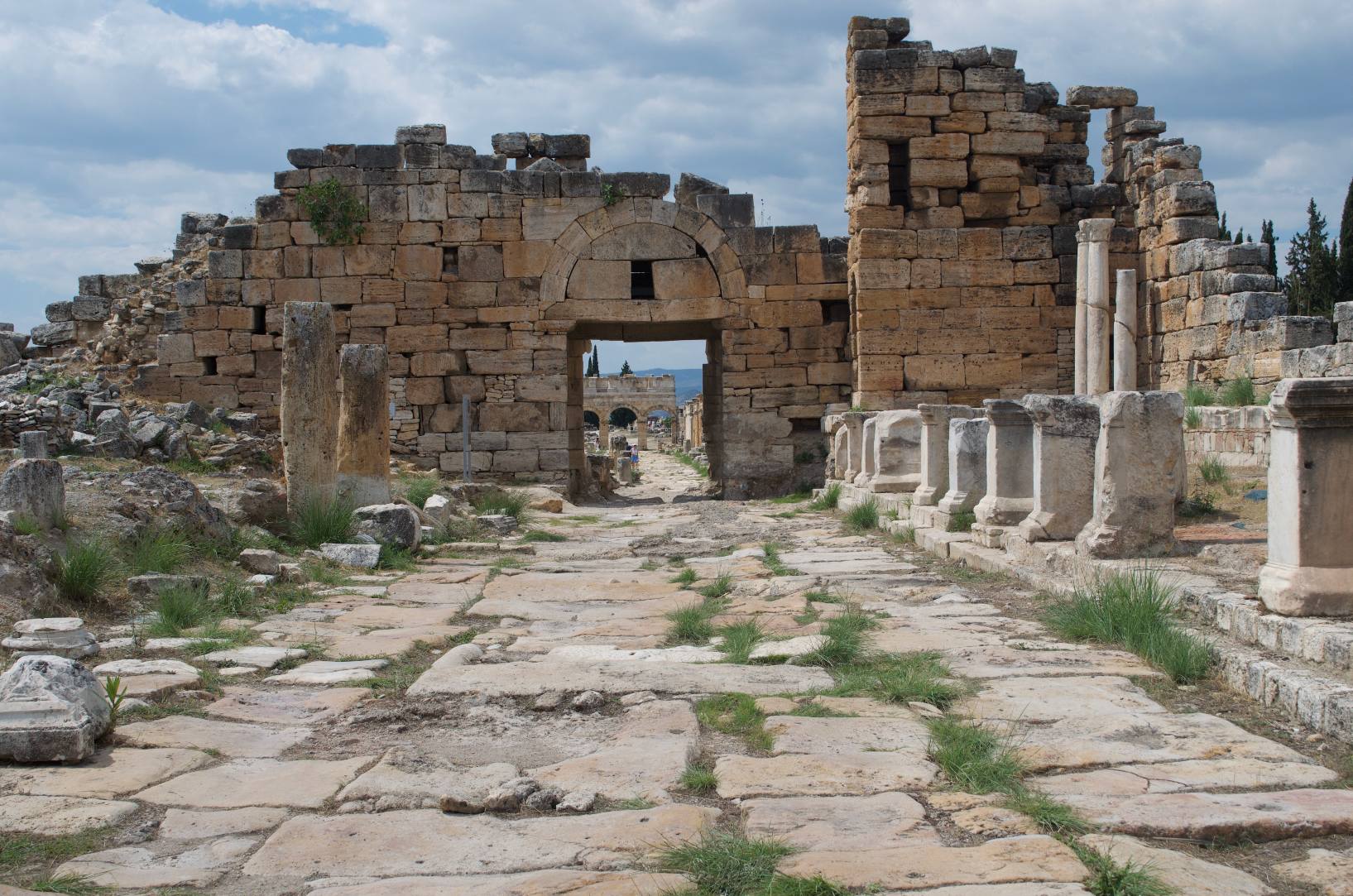



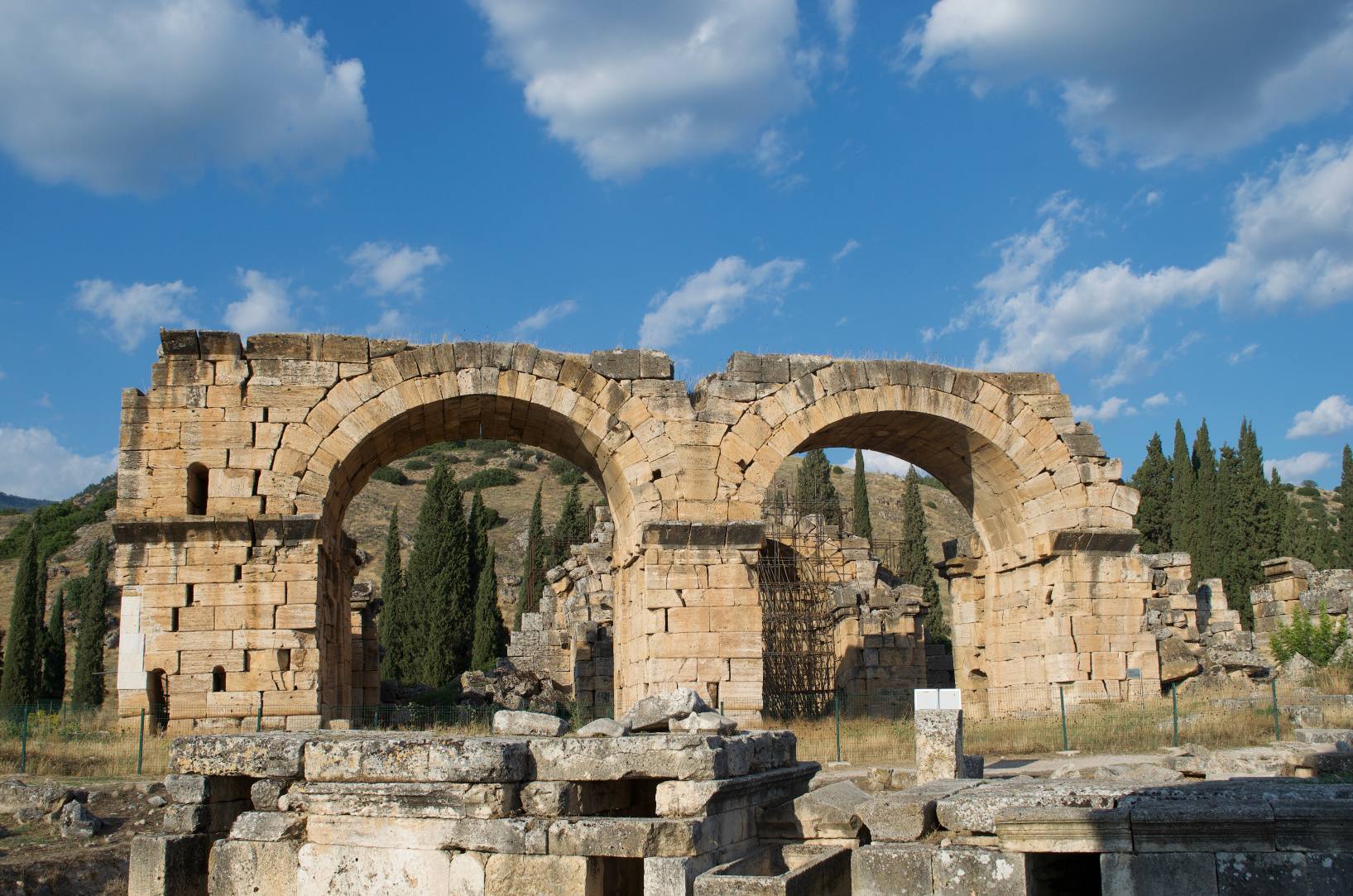
Northern City and Necropolis
On your way down from the Martyrium complex, cross the bridge and turn right, and you can walk along the old Roman road towards the rest of the city. You will eventually come to Frontinus Street, the main road that cuts through the ancient city. Continue north down the street, and you will see the Nymphaeum of the Tritons on your right. You can then pass under the Northern Byzantine gate, which would have served as the limit for the smaller and later phase of the city at the end of the 4th century AD.
There are multiple structures along this colonnaded street, but the large latrine complex will be on your right. You will also come to the beautiful triple-arched Frontinus Gate, built along with the paved roadway in the 1st century AD. This served as the monumental entrance to the ancient Roman city.
To the east of Frontinus Street was the agora. During the 2nd century AD, this marketplace was constructed on an enormous scale, making it one of the largest in the Roman world. Due to earthquakes, not much remains of the ancient square, but a lone column and stairs. You can walk through the extensive field, which would have served as its central square. A small Byzantine church is also located east of the agora field, used during the 10th–11th centuries.
Finally, the last prominent feature before you reach the Northern Necropolis is the Basilica Bath. This structure served as a bath and purification center during the 3rd century AD, where visitors would stop before entering the city. It was later modified into a basilica church in the 6th century. Unfortunately, earthquakes have severely damaged it, and conservation efforts are underway.
The Northern Necropolis is one of the largest cemeteries in Turkey and includes graves from the 2nd century BC to the 3rd century AD. It contains tombs from all kinds of different religious traditions, including several prominent Jewish tombs. There is also the massive Tomb of the Curses. Multiple burial styles are also represented across this diverse assemblage, including Tumulus barrow-type tombs (Hellenistic age), house-type funeral buildings (2nd century), and sarcophagi. If you are interested in funeral traditions or Roman/Hellenistic history, this section is well worth exploring, and many of the prominent tombs have detailed signage.
The Hierapolis Archaeology Site is truly a marvel! Best of luck exploring, and once you are done, head to the incredible ancient city of Laodicea, which is only a 30-minute drive away (16 km/10 miles). You can also check out the site of ancient Colossae, which is 40 minutes away (31 km/19 miles).
—by Caleb Bowman
For more information:
Wilson, Mark. Biblical Turkey: A Guide to the Jewish and Christian Sites of Asia Minor. Istanbul: Yayinlari, 2020.



